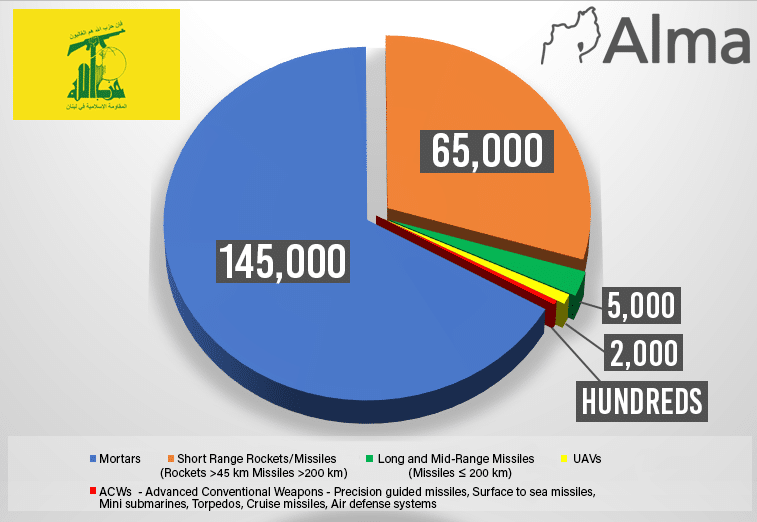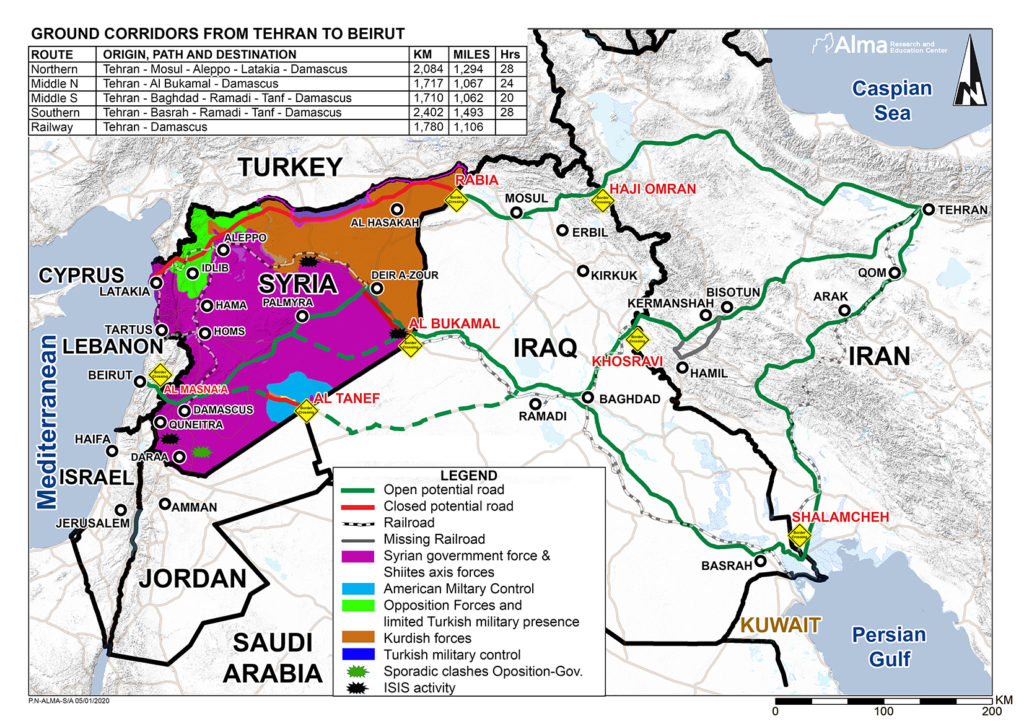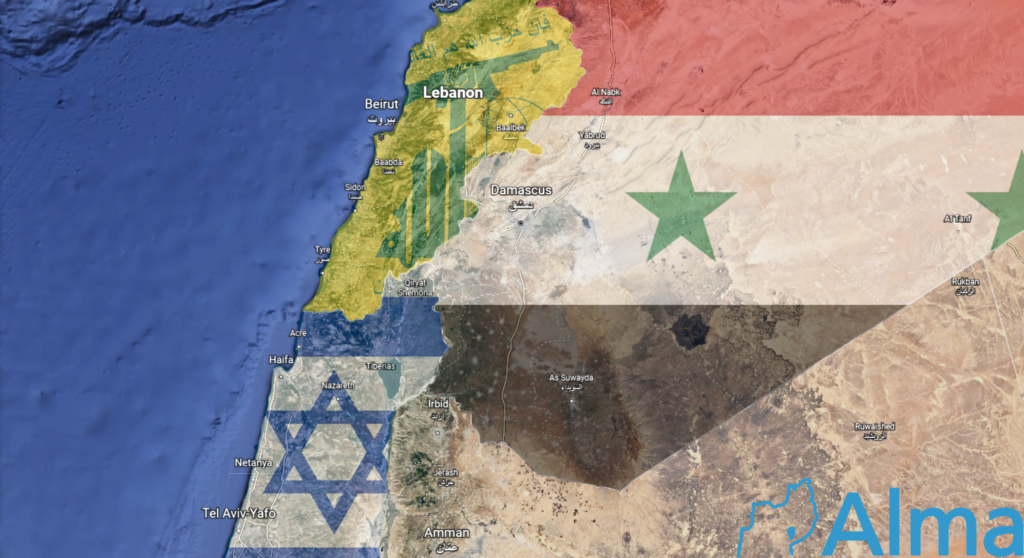The Lebanese and Syrian arenas are sometimes referred to in Israel collectively as a single ‘northern front.’ Both are dominated by the Iran-led axis, and elements in both fronts – Hezbollah in Lebanon, Hezbollah in Syria, Shi’ite militias in Syria, and the IRGC in Syria – could coordinate their activities in a future war with Israel.
The reference is correct. But there are still a number of differences between Lebanon and Syria.
In Lebanon, after the 2006 war fought between Hezbollah and Israel, the IDF returned to Israel’s international border. A United Nations Security Council Resolution (1701) banned the presence of illegal weapons in the south of the country – but on paper only.
In reality, Hezbollah filled up the arena with tens of thousands of armed personnel, dug underground combat tunnels, and stockpiled more than 70,000 ballistic projectile capabilities and 145,000 mortars. This includes surface-to-air missiles, cruise missiles, and some 2,000 UAVs according to assessments from Alma. Many of these capabilities were imported from Iran and Syria.

In Lebanon, there are different “rules of the game” from the rules of the game in Syria. A confrontation against Hezbollah could quickly develop into a war even without the parties intending to.
As a result, there is no sustained Israeli grey zone campaign in Lebanon to cut down Hezbollah’s capabilities, which have unfortunately grown monstrous in size.
Since any small confrontation can potentially lead to a full-blown war, a future conflict with Hezbollah will not resemble the 2006 conflict. Hezbollah’s capabilities are some 20 times more developed today, and of course, the IDF’s own airpower, ground maneuver, and intelligence capabilities are far more advanced than they were in 2006.
This reality has led both Israel and Hezbollah to exhibit ultra caution in calculating their steps regarding one another. The status quo has, so far, been seen by each party to serve its own interests best, although, this could change.
The situation in Syria could not be more different.
While like Lebanon, Syria has no real central state sovereignty, unlike in Lebanon, Israel has been able to prevent a great deal of Iran’s intentions to build a terror army on Syrian soil and equip it with tens of thousands of rockets and missiles.
Israel is not deterred from acting in Syria, where, since 2013, it has prevented the vision of the late Quds Force Commander Qassem Soleimani from turning into reality. Soleimani dreamed of building a Hezbollah 2.0 on Syrian soil.
Soleimani wanted tens of thousands of soldiers loyal to Iran in Syria, thousands of rockets, and the ability to rain down death and destruction on Israeli cities and military bases from Syrian soil. Later, he attempted to build Iranian missile bases in Syria.
This vision remains far from reality – but the Israeli grey zone campaign is not a fixed solution either. It is, essentially, a delay mechanism that is designed to work until something bigger changes – either until Iran itself changes from within, or until a political decision by the Iranian leadership is made.
Prior to Russia’s war on Ukraine, there was some hope that the US and Russia could come together on the agreed objective of rolling back Iran from Syria, but today this looks like a forgotten fantasy, impossible under the conditions of the new cold war.
Despite Israel’s achievements in keeping Iran at bay in Syria, Syria remains the focal point of the Iranian-Shi’ite axis and the central artery for nourishing Hezbollah in Lebanon. Iran has shown no signs of giving up its strategy of entrenchment in Syria, although it has changed tactics from time to time.
The ground corridor from Iraq to Syria continues to be seen by Iran as the key bridge connecting it to the Mediterranean coastline and allowing it to smuggle arms and personnel, while regular air and shipping smuggling runs occur as well via Syria.

The Quds Force remains responsible for arming proxies with offensive capabilities that are produced by Iran’s increasingly developed weapons industries.
However, the IRGC is becoming more dominant in Iran’s grey zone military campaigns, increasingly activating force in the form of UAVs and ballistic missiles, directly from Iranian territory.
Ultimately, Israel’s relative preventative success in Syria means that should a multi-front war erupt, such a war would principally be focused on Lebanon, and fewer resources would be needed to be placed by Israel on Syria.
This would improve Israel’s starting position in any future war, and it is the essential reason why Israel must continue to ‘mow the lawn’ in Syria consistently, and without blinking.
Although IDF sometimes refers to the Lebanese and Syrian arenas as a single ‘northern front.’ there are still a number of differences important to remember.






